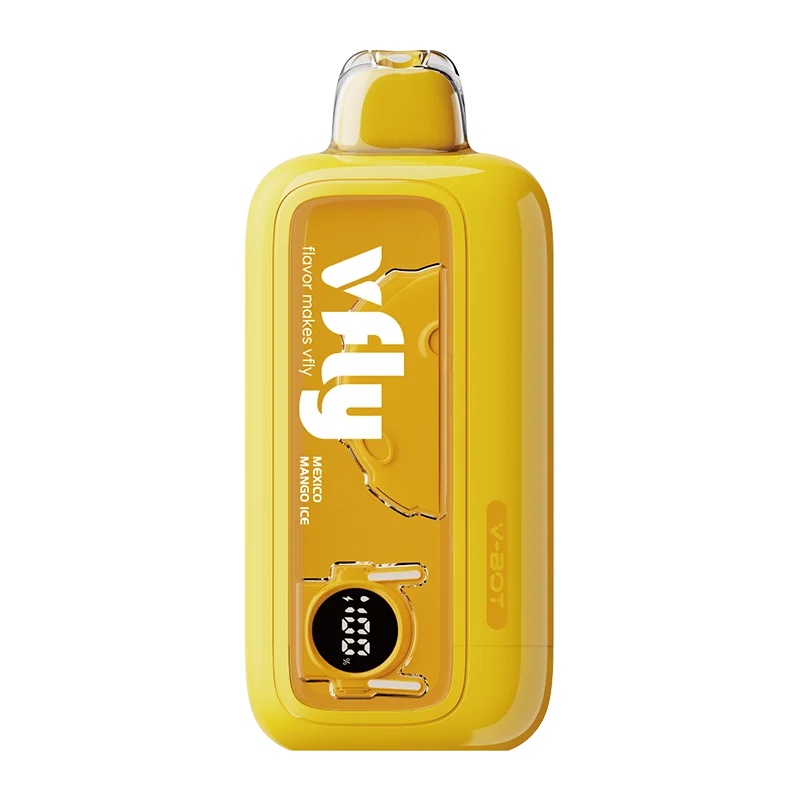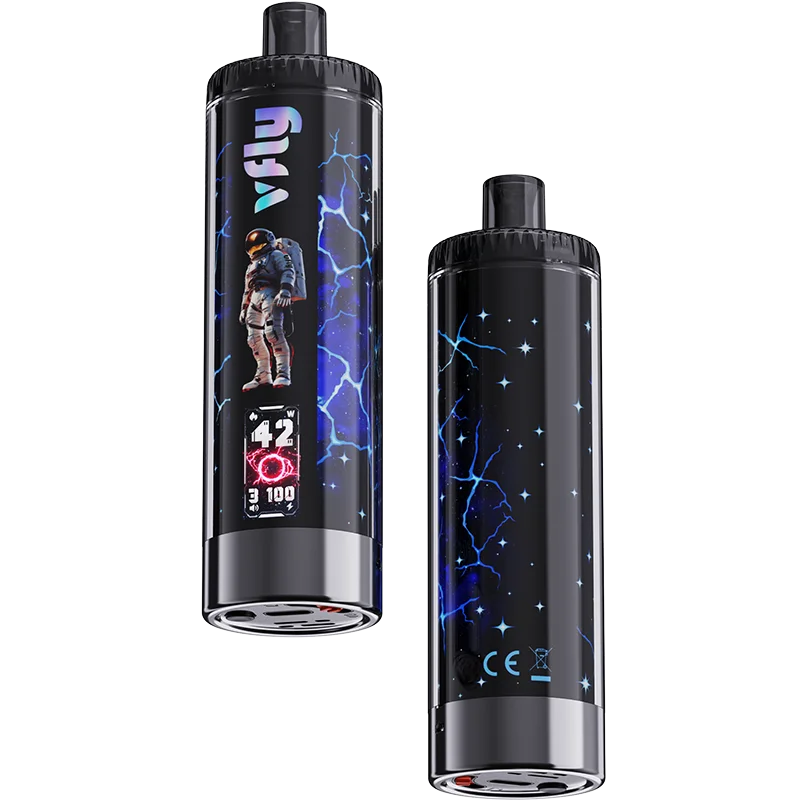How Do You Know When a Disposable Vape Is Empty?
One question often lingers amid exhaled vapors: "How do you know when a disposable vape is empty?" It's a question that haunts the mind of every vaper. In this enthralling guide, we're here to explore how to tell if a disposable vape is empty.

1. Vapor Output Decline: Navigating the End of Your Disposable Vape
One of the most telling signs that your disposable vape is nearing its end is a noticeable drop in vapor output, a critical indicator that the e-liquid inside your vape is almost depleted.
Why Vapor Production Decreases
Understanding this decline requires recognizing that the vape's performance is intrinsically linked to its e-liquid levels. Initially, when the vape is new, vapor production is at its peak, offering dense, flavorful clouds with each draw. However, as you use the vaping device and the e-liquid level falls, the heating element has less material to work with, resulting in thinner, less satisfying vapor.
Recognizing the Signs
So, how do you know when your disposable vape is empty based on vapor output? The first sign is a noticeable reduction in the density and size of the vapor clouds. If you're used to seeing large, billowing clouds and they've begun to wane, it's a clear signal that the e-liquid level is low. Another sign is the effort required to produce vapor. You may find yourself inhaling more forcefully or for a longer duration to achieve the same vapor volume you were accustomed to.
2. Airflow Changes: The Subtle Indicator of a Depleting Vape
In essence, airflow controls the air mixing with the vaporized e-liquid as vapers inhale, affecting the vapor's temperature, density, and taste. Understanding the dynamics of airflow within your disposable vape can provide invaluable insights into the remaining life of your device, particularly in gauging how much vape juice is left.
Identifying Airflow Reduction
As the vape juice level drops, the wicking material, which absorbs the e-liquid to be vaporized, has less to work with. It can slightly change how air moves through the vaping device, especially if the wick begins to dry out.
You might notice it becoming harder to draw on your vape, requiring more effort to pull the vapor through. The once effortless draw becomes slightly more restricted, signaling that the internal components, particularly the wicking mechanism, aren't as saturated as the optimal performance.

3. Change in Flavor: Decoding the Taste Signals of Your Disposable Vape
The shift in flavor profile serves as a critical alert for vapers about the impending closure of their disposable vape's lifecycle.
Detecting the Shift in Flavor
What once was a vivid, full-bodied taste might slowly lose intensity, becoming muted and less satisfying. This gradual change implies that the e-liquid levels are dropping, and the vape device's ability to deliver the same rich flavors is compromised.
The change can be abrupt, especially when the e-liquid is close to depletion. Vapers might encounter a distinctly burnt taste, a stark departure from the intended flavor profile. This burnt taste is because the heating element or coil comes into direct contact with the wick that has little to no e-liquid left to vaporize.
4. Battery Life Indicators: The Power Behind Your Disposable Vape's Lifespan
Unlike the other indicators discussed — vapor output decline, airflow changes, and flavor shifts — the battery's condition provides a more concrete measure of a disposable vape's lifespan.
Interpreting Battery Life Signs
When viewed through the lens of battery life, a weakening vapor output can specifically point to a battery losing its charge and, consequently, its ability to adequately heat the e-liquid.
Many disposable vapes come equipped with LED indicators providing immediate visual cues about battery status. A blinking light, for example, is a common way devices signal a low battery.

5. LED Light Signals: Interpreting the Visual Cues of Your Disposable Vape
Many disposable vape devices come equipped with an LED light, a feature that serves as an aesthetic enhancement and a functional indicator of the device's status.
Understanding LED Light Behaviors
- Steady Light: A steady LED light during a puff usually indicates that the device is functioning correctly, with sufficient battery life and e-liquid to produce vapor.
- Blinking Light: When the LED light starts blinking, it's often a sign that the vape device faces a specific issue, such as the most commonly low battery life. A low battery in disposable vapes often coincides with the e-liquid running out, as these devices plan to match the battery lifespan with the amount of vape juice they contain.
- Color Changes: Some disposable vapes feature LED lights that can change color. These color changes can indicate various things, such as battery level or device status. For instance, a light might turn from green to red as the battery depletes, giving you a visual cue that the device is nearing the end of its life.
6. Difficulty Drawing: The Physical Cue of an Empty Vape
An increase in draw resistance or difficulty inhaling stands out as a physical cue, suggesting the vape is nearing emptiness.
Identifying Increased Draw Resistance
Increased draw resistance is a noticeable change in how hard one must inhale to elicit vapor production. Initially subtle, this change grows more pronounced as the e-liquid level keeps dropping. The once effortless draw becomes laborious, signaling that the e-liquid, the source material for the vapor, is nearly depleted.
This increase in resistance occurs because, with less e-liquid to vaporize, the device’s wicking material — responsible for absorbing and delivering e-liquid to the heating element — begins to dry out. Without sufficient e-liquid, the wick cannot smoothly facilitate vaporization, leading to harder draws and less vapor production.

7. Audible Changes: Listening to the Sounds of a Depleting Vape
Among the intricate signals indicating a disposable vape is empty, audible changes are often overlooked. However, when the vaping device nears depletion, changes in this familiar sound can provide critical insights into the remaining e-liquid level.
Decoding the Sounds of Depletion
One usual change is a gurgling noise, expressing that the e-liquid is running critically low. This gurgling is often the result of air bubbles forming in the wick area or the e-liquid chamber as the liquid level gets too low to allow for general wicking and vaporization processes. Instead of a smooth transition from liquid to vapor, the air disrupts the remaining liquid, creating a gurgling sound as you draw.
Another audible sign is a change in the airflow sound. You might notice the airflow becomes quieter or changes pitch, indicating a shift in how air is moving through the disposable vape due to reduced e-liquid levels affecting the vape's internal pressure and airflow dynamics.
8. Leakage or Condensation Issues: The Wet Warning Signs of a Waning Vape
The physical condition of the disposable vape — specifically, any unexpected moisture around the mouthpiece or signs of leakage — also holds valuable insights into the state of the e-liquid reservoir.
Causes of Leakage and Condensation
One contributing factor is the change in the viscosity of the e-liquid. As the volume decreases, the remaining liquid can become more susceptible to temperature variations, potentially altering its consistency. This change can lead to leakage, as the thinner liquid might easily escape from the wicking system or storage area.

FAQ:
Q1: How do I know when to replace my disposable vape?
Several signs indicate it's time to replace your disposable vape, including a noticeable decrease in vapor production, changes in flavor profile (from subtle shifts to a distinctly burnt taste), alterations in the device's LED light behavior, increased draw resistance, audible changes during use, signs of leakage or condensation, and a sudden drop in performance.
Q2: How do I find out how much is left in my disposable vape?
Unlike refillable vapes, disposable vapes don't typically offer a way to visually check e-liquid levels. Instead, you'll need to rely on indirect indicators of e-liquid depletion, such as the signals mentioned earlier. After you become more familiar with your vaping habits and how long a disposable tends to last under your usage patterns, estimating the remaining life becomes more intuitive.
Q3: How do you know when an e-cig cartridge is empty?
For e-cig devices that use cartridges, the signs of an empty cartridge are similar to those of disposable vapes running low on e-liquid. You'll notice a reduction in vapor output, changes in taste (often towards a burnt flavor), and possibly changes in the device's operation, such as the activation light blinking more frequently or changing color. When these signs appear, it's time to replace the cartridge.
Q4: Is it bad to hit an empty disposable vape?
Yes. First, it can produce an unpleasant burnt taste due to the heating element burning the wicking material without sufficient e-liquid. Additionally, it can strain the battery and potentially damage the device's heating mechanism.
In conclusion, navigating the lifecycle of a disposable vape requires a keen awareness of the various signs that indicate it's time for a replacement. Staying attuned to these signals and embracing the transition moments with readiness for a new vaping device elevate your vaping journey, ensuring it remains seamless and satisfying.



